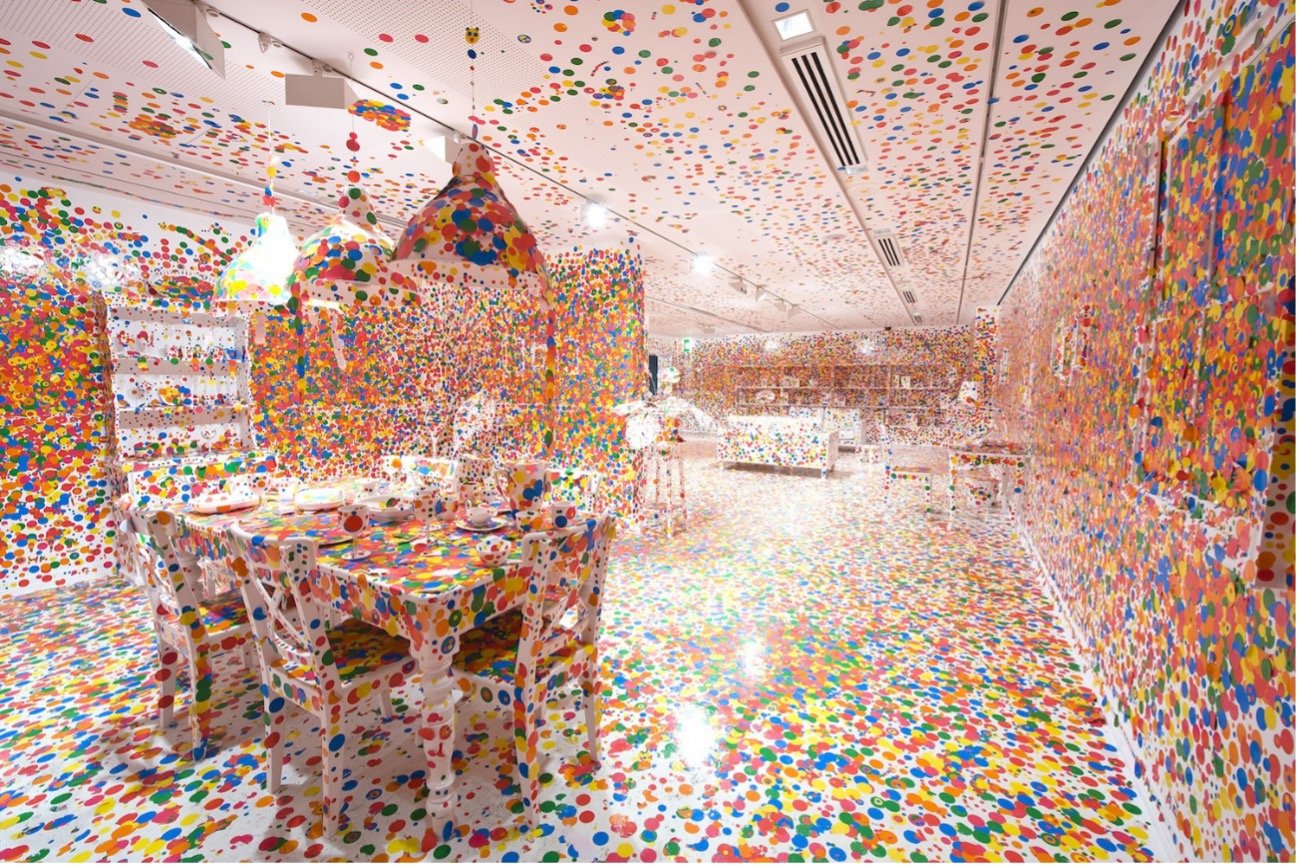Issue 48 - The studio space...The exhibited studio, by Michaela Hall
The exhibited studio
The artist’s studio can mean many things to different artists – but in a nutshell, it’s a place for ideas to be born, concepts to be explored, and usually, for the artwork in question to be created. The studio can be a typical office room for some with paint-splashed walls, and for others something more atypical like an outdoor surrounding where natural materials are gathered. These lines are especially blurred though, when an artwork and studio merge – when an installation is created in situ and the exploration is made visible and exhibited, even including others in the usual ‘studio process’.
One artist who is a master at this is, is one of my personal favourites, Japanese artist Yayoi Kusama. Her explosively colourful and bold installations are well-known around the world for their polka dots and infinite patterns. While a lot of Kusama’s works are hand-crafted and planned to each meticulous detail, Kusama is also a fan of work in situ – the work being created in the space by a collective, in this case, the public. In ‘The Obliteration Room’ which has toured galleries globally – the space itself is the artwork. At the start of the exhibition, viewers are greeted with a blank white room, a ‘studio’ if you like – to which they can add their mark in the form of multicoloured rainbow polka dot stickers. Over the series of the exhibition, the room transforms into a colourful and very different space, relying on those visiting to create the work. And of course, how this room transforms will differ each time – depending on the participation. It’s an artwork that blends the process and the final result.
With the same approach but in many different ways, other artists have adopted this approach to their own working style, that is merging the process and final result, so that the ‘studio’ and the ‘artwork’ become one. A drastically contrasting example of this is the work of CALC (the pan-European collective Casquiero Atlantico Labortorio Cultural). This work also relies on participation but in a digital space. Their work ‘Communimage’ is a web-based artwork that can be accessed by anyone anywhere who wants to take part, the creative process encourages people to upload an image of their choice with a basic description to a grid system which in turn creates a collage-like ‘virtual collective sculpture’. Despite the fact this was created in 1999, the site is still active and people can still contribute. In fact, there are currently over 26,000 images making up the virtual sculpture. Although this can be joined from anywhere, it has often been exhibited in a gallery purely in the form of a computer to access the website. In this artwork’s case, its ‘studio’ process is ongoing and collaborative and the final piece is in a sense unachievable due to constant flux. An artwork that takes blending the making and the piece itself to an extreme.
What we can gather from these approaches is that over recent decades there has been and continues to be a shift in the way artists work. Long gone are the days when artists only work in solitary or at an easel and then present one final piece. While this still exists, we’re also seeing more artist collectives appear, more collaborative approaches to process and more everyday places used as studios. In contemporary society, artists no longer have to fit into a box and can create artwork from anywhere, in any way they like and these artworks demonstrate the power that being open-minded can bring towards how and where we make work.



